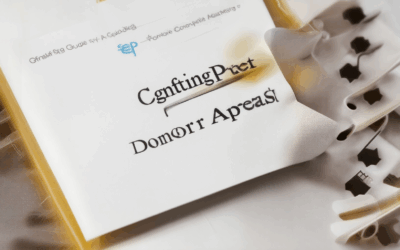In today’s interconnected world, nonprofits play a pivotal role in driving social change, and leveraging effective digital engagement strategies has become essential for maximizing their impact. Whether it’s mobilizing supporters, fostering community connections, or amplifying their mission-driven messages, nonprofits are increasingly turning to innovative digital tools and platforms to achieve their goals. This article delves into the critical aspects of nonprofit digital engagement, exploring proven strategies, key metrics, and tools that can help organizations thrive in an ever-evolving digital landscape. From understanding the 33% rule for nonprofits to identifying the best social media platforms for engagement, we’ll examine what it takes to create a robust digital strategy that aligns with your organization’s objectives. By focusing on the three Cs of nonprofit marketing and the role of digital engagement specialists, this article aims to provide actionable insights for those looking to enhance their outreach and build stronger connections with their audiences. Ultimately, the goal is to empower nonprofits to leverage digital tools effectively, ensuring their missions resonate far beyond their immediate circles and drive meaningful change.
Key Takeaways
- Digital Engagement Drives Mission Impact: Strategic use of digital channels fosters meaningful connections, enhancing nonprofit effectiveness and achieving organizational goals.
- Personalized Experiences Boost Satisfaction: Tailored interactions improve customer satisfaction and loyalty, crucial for building lasting relationships.
- Data-Driven Insights Enhance Decision-Making: Leveraging analytics optimizes strategies, ensuring efficient and effective engagement efforts.
- Stronger Relationships Through Consistent Interaction: Regular, meaningful engagement builds deeper connections with stakeholders.
- Strategic Use of Social Media, Email, and Mobile Apps: Effectively utilizing these platforms ensures comprehensive and consistent audience engagement.
- Role of a Digital Engagement Specialist: Professionals plan, execute, and optimize digital strategies, driving brand awareness and retention.
- Leveraging Advanced Tools and Technologies: Utilizing tools like CMS, email software, and analytics enhances engagement and strategy refinement.
- SEO Integration Improves Visibility: Optimizing content for search engines maximizes online presence and reaches broader audiences.
- Community Building Through Interactive Content: Engaging methods like polls and Q&A sessions foster community and participation.
- Balancing Content and Consistency: Regular, high-quality content maintains audience interest without causing overwhelm.
- Unified Cross-Channel Approach: A cohesive message across platforms maximizes reach and impact, ensuring consistent brand presence.
- Encouraging User-Generated Content: Motivating followers to share experiences creates authentic advocacy and expands reach.
- Innovation and Adaptation: Staying updated with digital trends ensures engagement strategies remain effective and relevant.

The 33% Rule for Nonprofits
The 33% rule for nonprofits pertains to the percentage of support received from the general public or government entities. Here’s a breakdown:
- Threshold Definition : Nonprofits are categorized based on the percentage of their total support originating from the public or government. Specifically, if an organization receives more than 10% but less than 33.333…% (one-third) of its support from these sources, it may qualify as a public charity under certain conditions.
- Public Charity Classification : To maintain public charity status, the nonprofit must demonstrate that, considering all facts and circumstances, a substantial portion of its support comes from public sources. This is typically documented on IRS Form 990, particularly in Schedule A and Schedule B, which detail contributions and grants.
- Compliance and Consultation : Nonprofits falling into this range should consult tax professionals to ensure compliance with IRS requirements. Proper classification is crucial to avoid penalties and maintain tax-exempt status.
This rule underscores the importance of understanding funding sources and ensuring adherence to IRS guidelines for nonprofits.
Best Social Media Platforms for Nonprofits
When choosing the best social media platform for nonprofits, it’s important to evaluate factors like reach, engagement, and alignment with organizational goals. Here’s a breakdown of popular platforms and their suitability for nonprofits:
- Facebook : Ideal for building communities and raising awareness. Nonprofits can share stories, organize events, and engage volunteers effectively.
- Twitter : Great for quick updates and global outreach. It’s particularly useful for sharing urgent appeals and campaign promotions.
- Instagram : A visually appealing platform that’s excellent for storytelling through images and videos. It’s great for showcasing impact and volunteer efforts.
- LinkedIn : While less commonly used, LinkedIn is a powerful tool for professional networking. It’s ideal for connecting with donors, partners, and industry experts.
- YouTube : Perfect for video content that tells your organization’s story. Videos can be more engaging and shareable than static posts.
- Pinterest : Often underutilized, Pinterest can drive traffic to your website through visually appealing infographics and project highlights.
- Email Marketing : A cornerstone of nonprofit communication. It allows for direct engagement and keeps supporters informed about your initiatives.
To maximize your nonprofit’s online presence, consider combining these platforms strategically. For instance, use Facebook for community building, Twitter for quick updates, Instagram for visuals, LinkedIn for professional networking, YouTube for storytelling, Pinterest for content promotion, and email marketing for ongoing supporter engagement.

The Three C’s of Non-Profit Marketing
The success of non-profit marketing hinges on three critical components, commonly referred to as the “Three C’s”: Commitment, Collaboration, and Contribution. Understanding and leveraging these elements can significantly enhance your non-profit’s ability to engage supporters and achieve its mission.
- Commitment :
Commitment involves ensuring that your prospects are genuinely invested in your cause. This means they are willing to dedicate their time, resources, or financial support to your organization. By prioritizing those who show a deep interest and alignment with your values, you can focus your efforts on individuals and groups that are most likely to contribute meaningfully. - Collaboration :
Collaboration is about fostering partnerships within your organization and with external allies. Working effectively with your team, board members, and other stakeholders ensures that resources are shared efficiently and goals are aligned. Partnering with other non-profits, businesses, or community groups can amplify your impact and broaden your reach. - Contribution :
Contribution refers to the actual act of giving. This can take many forms, including financial donations, in-kind gifts, volunteer work, or advocacy. By encouraging and facilitating contributions, you empower your supporters to play an active role in advancing your mission. A well-structured strategy around contribution opportunities ensures that your organization meets its objectives and grows its supporter base.
By focusing on these three Cs, your non-profit can better identify and engage high-potential prospects, streamline operations, and maximize its social impact.

Role of Digital Engagement
Digital engagement refers to the process of connecting with customers, stakeholders, or members through digital channels to foster meaningful interactions and build lasting relationships. It involves leveraging technology to create personalized experiences, encourage interaction, and gather insights to drive decision-making.
Key Components of Digital Engagement
- Customer Experience : Digital engagement focuses on delivering seamless and consistent experiences across all digital touchpoints, ensuring customers feel valued and understood.
- Personalization : Tailoring content, offers, and communication based on individual preferences, behaviors, and demographics enhances engagement and satisfaction.
- Data-Driven Insights : Analyzing digital interactions to gain actionable intelligence helps organizations optimize strategies and improve outcomes.
Benefits of Digital Engagement
- Enhanced Customer Experience : Personalized interactions lead to higher satisfaction and loyalty.
- Data-Driven Decisions : Insights from digital interactions inform strategic choices, improving efficiency and effectiveness.
- Long-Term Relationships : Consistent and meaningful engagement fosters deeper connections with customers and stakeholders.
Strategies for Effective Digital Engagement
- Social Media Interaction : Engage audiences on platforms like Facebook, Twitter, and Instagram by responding to comments, sharing content, and hosting live events.
- Email Campaigns : Send targeted emails with relevant news, promotions, and updates to keep the audience informed and interested.
- Mobile Apps : Develop user-friendly apps that offer personalized features, push notifications, and convenient access to services.
By prioritizing digital engagement, organizations can build stronger connections, drive growth, and achieve their goals more effectively.
What Does a Digital Engagement Specialist Do?
A Digital Engagement Specialist plays a pivotal role in fostering meaningful connections between organizations and their audiences through strategic digital initiatives. Their primary responsibilities revolve around planning, executing, and optimizing online engagement activities to drive brand awareness, customer retention, and community building.
Key Responsibilities
- Strategy Development: Create and implement comprehensive digital engagement strategies aligned with organizational goals.
- Content Creation: Develop compelling digital content, including social media posts, emails, blogs, and multimedia assets.
- Audience Interaction: Engage with target audiences across various digital platforms, responding to comments, messages, and feedback.
- Analytics & Reporting: Monitor engagement metrics, analyze campaign performance, and provide insights to optimize future strategies.
- Collaboration: Work closely with cross-functional teams, including marketing, content creators, and developers, to ensure seamless execution of digital initiatives.
- Innovation: Stay updated on emerging digital trends and integrate innovative approaches to enhance engagement efforts.
Tools & Technologies
- Social Media Platforms (e.g., Facebook, Instagram, Twitter)
- Content Management Systems (CMS)
- Email Marketing Software
- Digital Analytics Tools (e.g., Google Analytics, Social Listening Tools)
- Design Tools (e.g., Canva, Adobe Illustrator)
SEO Best Practices
As part of their role, a Digital Engagement Specialist may also incorporate SEO strategies to improve content visibility. This includes researching keywords, optimizing content for search engines, and ensuring proper use of meta tags and alt text. By aligning digital engagement efforts with SEO principles, specialists can maximize the reach and impact of their campaigns.
Why It Matters
Effective digital engagement fosters stronger relationships between organizations and their stakeholders, driving loyalty and supporting long-term objectives. A well-executed strategy can enhance reputation, increase visibility, and ultimately contribute to the success of the organization’s mission.
For more insights into optimizing your nonprofit’s digital presence, explore our guides on Nonprofit Content Strategy and Social Media Best Practices .

How to Improve Digital Engagement
To enhance digital engagement, consider implementing the following strategies:
- Personalize Content : Use data analytics to tailor content to individual preferences, ensuring messages resonate more deeply with your audience.
- Leverage Interactive Content : Create polls, quizzes, and live Q&A sessions to foster two-way communication and increase involvement.
- Embrace Visual Storytelling : Utilize high-quality images, videos, and infographics to capture attention and deliver messages more effectively.
- Build a Community : Establish forums or discussion groups where users can connect around shared interests, fostering a sense of belonging.
- Maintain Consistency : Regularly publish content to keep your audience engaged without overwhelming them, building trust over time.
- Integrate Multiple Channels : Ensure a unified message across social media, email, and your website to maximize reach and impact.
- Encourage User-Generated Content : Run contests or campaigns that motivate followers to share their experiences, turning them into brand advocates.
- Leverage Technology : Use AI and big data to gain deeper insights into audience behavior, enabling more informed strategy adjustments.
By combining these approaches, you can significantly boost digital engagement and drive meaningful interactions with your audience.





0 Comments